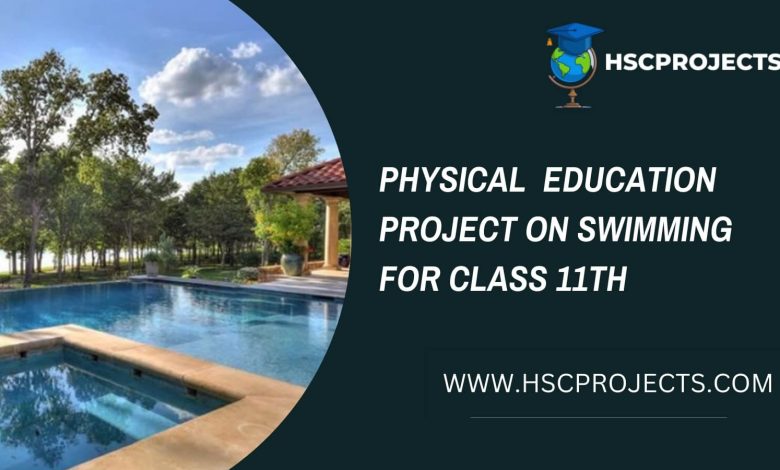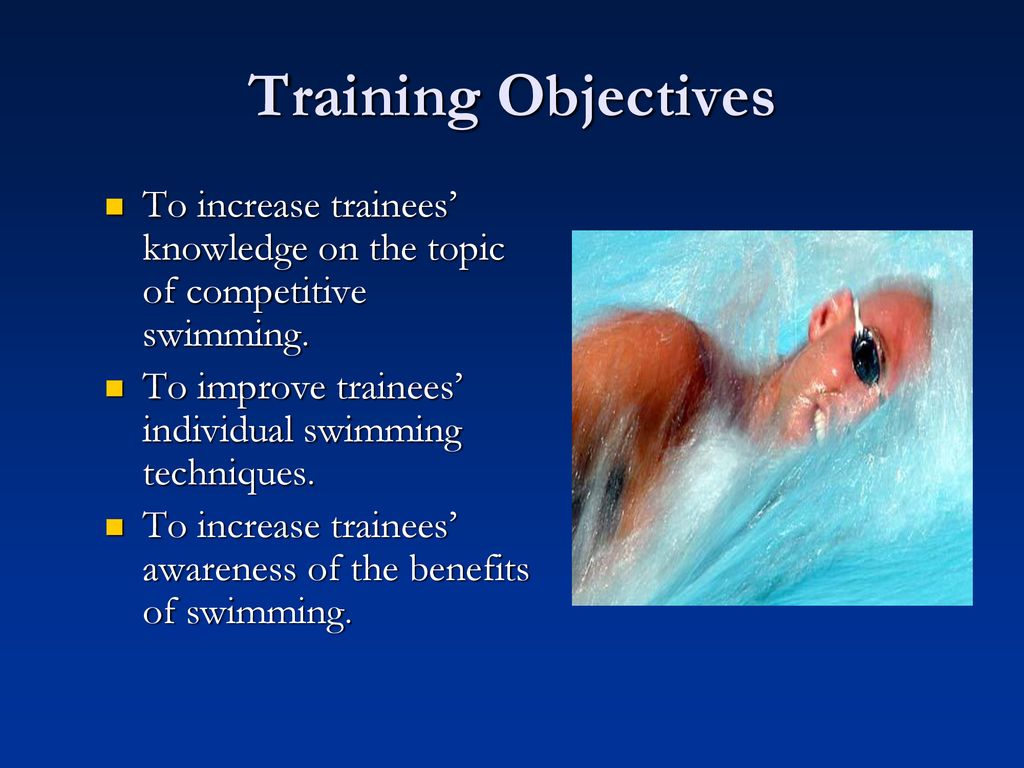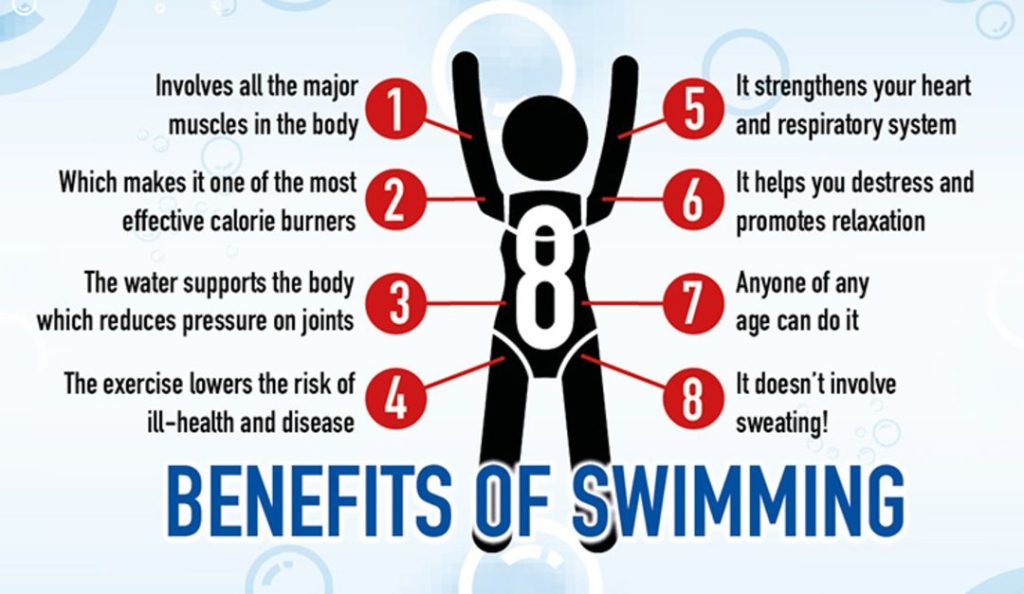
Physical Education Project On Swimming For Class 11th
Acknowledgement
Embarking on the journey of crafting “Dive into Fitness: A Comprehensive Physical Education Project on Swimming for Class 11th” has been a fulfilling endeavor, and it brings me great pleasure to express my gratitude to those who have contributed to its realization. Firstly, I extend my sincere thanks to my physical education teachers whose guidance and expertise have been invaluable in shaping the content of this project. Their passion for promoting a healthy lifestyle through swimming has been a constant source of inspiration. I am also deeply thankful for the support and encouragement from my peers who provided constructive feedback, fostering an environment of collaboration and shared enthusiasm. Additionally, I would like to acknowledge the broader community of swimmers, coaches, and researchers whose collective knowledge has enriched the depth and breadth of this project. This endeavor would not have been possible without the unwavering support of my family and friends, who patiently encouraged me throughout the process. Lastly, I express my gratitude to the vast pool of resources available, both online and offline, that have served as a wellspring of information. This project stands as a testament to the collaborative efforts of a community dedicated to promoting the holistic benefits of swimming in physical education.
Introduction
In the fluid world of physical education, where the pursuit of holistic well-being is paramount, the rhythmic strokes and buoyant movements of swimming emerge as a beacon of fitness. Welcome to a dive into the essence of aquatic vitality – a comprehensive exploration titled “Dive into Fitness: A Physical Education Project on Swimming for Class 11th.” In this project, we plunge into the refreshing waters of swimming, not merely as a skill but as a transformative journey towards physical, mental, and emotional wellness. As we navigate the currents of knowledge, we aim to unravel the multifaceted benefits, unravel the technical nuances, and explore the profound impact that swimming can have on an individual’s overall health. Join us in this immersive experience, where the confluence of education and aquatic fitness propels us into the depths of understanding, appreciating, and integrating swimming into the fabric of physical education. It’s time to make a splash – both in the pool and on the path to a healthier lifestyle.
Features Of Swimming
- Comprehensive Exploration: The project offers a thorough examination of swimming, encompassing its historical significance, health benefits, various strokes, safety measures, and its potential integration into the school’s physical education curriculum.
- Health-Focused Approach: Emphasis is placed on the health benefits of swimming, covering cardiovascular fitness, muscle toning, weight management, and stress reduction. The project aims to highlight swimming not just as a sport but as a holistic fitness activity.
- Technique Breakdown: The project meticulously breaks down the fundamental techniques of swimming, providing a clear understanding of essential skills such as breathing, floating, and body positioning. It also explores the nuances of popular swimming strokes like freestyle, backstroke, breaststroke, and butterfly.
- Safety First: Recognizing the paramount importance of safety, the project delves into water safety measures and basic lifesaving skills. It equips students with knowledge essential for a secure aquatic experience.
- Historical Context: A historical perspective on swimming is presented, tracing its evolution from a survival skill to a competitive and recreational activity. Understanding the roots of swimming adds depth to the appreciation of this water-based fitness endeavor.
- Integration into Curriculum: The project explores the feasibility of incorporating swimming into the school’s physical education curriculum. It discusses potential challenges, benefits, and extracurricular opportunities, paving the way for a more holistic approach to fitness education.
- Engaging Visuals and Resources: To enhance comprehension, the project incorporates engaging visuals, diagrams, and multimedia resources. These aids serve as valuable tools for a more interactive and immersive learning experience.
- Collaborative Community Involvement: Acknowledging the contributions of the broader swimming community, the project integrates insights from swimmers, coaches, and researchers. This collaborative approach enriches the content with diverse perspectives and expertise.
- Inspiration for Lifelong Fitness: Beyond the classroom, the project aspires to inspire a lifelong commitment to fitness through swimming. By showcasing the enduring benefits and joy of swimming, it encourages students to embrace aquatic activities as part of their ongoing wellness journey.
- Holistic Wellness Advocacy: “Dive into Fitness” is not just a project; it’s an advocacy for holistic wellness through swimming. By combining education, physical activity, and safety awareness, the project strives to create a platform for students to develop a positive and enduring relationship with aquatic fitness.
Uses Of Swimming
The “Dive into Fitness: A Physical Education Project on Swimming for Class 11th” holds immense value and serves various purposes, contributing to the holistic development of students and the broader educational community. Here are some key uses of this physical education project:
- Promoting Physical Fitness: The project serves as a catalyst for promoting physical fitness among students. By exploring the health benefits of swimming, it encourages regular physical activity that contributes to cardiovascular health, muscle toning, and overall well-being.
- Skill Development: Through a detailed breakdown of swimming techniques and strokes, the project becomes a practical guide for skill development. It empowers students with the knowledge and confidence to engage in swimming as a lifelong skill.
- Safety Awareness: Incorporating water safety measures and lifesaving skills, the project enhances safety awareness. Students not only learn how to swim but also acquire essential knowledge about staying safe in aquatic environments, fostering a responsible approach to water activities.
- Educational Enrichment: The project provides an educational enrichment opportunity, offering historical insights into swimming and its evolution. This historical context adds depth to the educational experience, connecting the physical activity to its cultural and historical significance.
- Curricular Integration: With a focus on the feasibility of integrating swimming into the school’s physical education curriculum, the project becomes a resource for curriculum development. It opens discussions on the benefits of diversifying physical education programs and introduces the idea of incorporating aquatic activities.
- Multimedia Learning: Incorporating engaging visuals and multimedia resources, the project caters to diverse learning styles. It becomes a versatile educational tool, enhancing understanding through visual aids, diagrams, and interactive content.
- Community Collaboration: The project encourages collaboration within the school community by acknowledging the contributions of swimmers, coaches, and researchers. This collaborative approach fosters a sense of community and shared enthusiasm for the benefits of swimming.
- Extracurricular Opportunities: By discussing the potential for creating swimming clubs, competitions, and events within the school, the project opens doors to extracurricular opportunities. These activities not only reinforce the lessons learned but also provide avenues for social interaction and team building.
- Promoting Lifelong Fitness Habits: Beyond the immediate curriculum, the project serves as a foundation for promoting lifelong fitness habits. By instilling an appreciation for swimming, it encourages students to embrace aquatic activities as a regular part of their fitness routine even beyond the classroom setting.
- Empowering Healthy Lifestyle Choices: Ultimately, the project becomes a tool for empowering students to make healthy lifestyle choices. It equips them with the knowledge and skills necessary to engage in a physically active and safety-conscious lifestyle, setting the stage for lifelong well-being.
Advantages Of Swimming
Engaging in swimming as part of a physical education program offers a multitude of advantages, promoting holistic well-being and personal development. Here are the key advantages of incorporating swimming into physical education:
- Cardiovascular Fitness: Swimming is an excellent cardiovascular exercise that enhances heart health and improves overall circulation. Regular swimming sessions contribute to increased stamina and endurance.
- Full-Body Workout: Unlike some other forms of exercise, swimming engages multiple muscle groups simultaneously, providing a comprehensive full-body workout. This leads to improved muscle tone, strength, and flexibility.
- Low-Impact Exercise: Swimming is a low-impact activity, making it gentle on the joints and suitable for individuals with joint issues or those recovering from injuries. This characteristic allows for sustained physical activity without excessive strain on the body.
- Weight Management: Swimming is an effective calorie-burning activity that supports weight management. It helps burn calories while toning muscles, making it a valuable component of any fitness routine aimed at weight control.
- Stress Reduction: The rhythmic and repetitive nature of swimming, combined with the soothing properties of water, promotes relaxation and stress reduction. Swimming is an ideal activity for promoting mental well-being and combating the effects of stress.
- Lifesaving Skills: Learning to swim includes acquiring essential lifesaving skills such as floating, treading water, and basic rescue techniques. These skills not only enhance personal safety in aquatic environments but also instill a sense of confidence and responsibility.
- Improved Respiratory Function: Swimming requires controlled and rhythmic breathing, contributing to improved respiratory function. This aspect is particularly beneficial for individuals with respiratory conditions, promoting better lung capacity and efficiency.
- Enhanced Coordination and Motor Skills: The varied strokes and movements involved in swimming enhance coordination and motor skills. Students develop a heightened sense of body awareness and control, which can positively impact other physical activities and daily tasks.
- Social Interaction: Swimming, often performed in a communal setting, provides opportunities for social interaction. Whether through group lessons, swimming clubs, or team activities, students can develop social skills and a sense of camaraderie.
- Lifelong Fitness Habit Formation: Introducing swimming in physical education encourages the formation of lifelong fitness habits. The skills and positive experiences gained during swimming classes can inspire individuals to continue swimming as a regular part of their fitness routine throughout their lives.
- Adaptability for All Ages: Swimming is an activity that can be adapted to suit individuals of all ages and fitness levels. It offers a lifelong fitness option that can be continued well into adulthood and senior years.
- Boosted Confidence and Self-Esteem: Mastering the art of swimming and achieving milestones in aquatic skills can significantly boost confidence and self-esteem. Overcoming challenges in the water translates to increased self-assurance in various aspects of life.
Disadvantages Of Swimming
While swimming is a highly beneficial physical activity, incorporating it into a physical education project may come with some challenges and potential disadvantages. It’s important to address these aspects to ensure a well-rounded understanding of the implications. Here are some potential disadvantages:
- Limited Accessibility: Not all schools or educational institutions have easy access to swimming facilities. The lack of a nearby pool can limit the implementation of a swimming-focused physical education project, making it impractical for some educational settings.
- Cost and Resource Constraints: Building and maintaining a swimming pool can be expensive. The financial investment required for pool construction, maintenance, and the procurement of swimming-related equipment may pose a significant challenge for schools with budget constraints.
- Safety Concerns: Supervising swimming activities requires specialized lifeguard training and constant vigilance. Safety concerns, especially for a large group of students in the water, can be a potential disadvantage if not managed effectively. Adequate safety measures and personnel are essential for a successful swimming program.
- Weather Dependency: Outdoor swimming facilities are susceptible to weather conditions. Adverse weather, such as storms or extreme temperatures, can disrupt swimming lessons, leading to a less consistent and predictable physical education experience.
- Logistical Challenges: Coordinating transportation to and from swimming facilities, managing changing rooms, and organizing class schedules around pool availability can present logistical challenges. These challenges may add complexity to the implementation of a swimming-focused physical education program.
- Learning Curve for Non-Swimmers: Teaching swimming to students who are not familiar with aquatic environments can be challenging. The initial learning curve for non-swimmers may slow down the progression of the program, requiring additional time and resources for basic skill development.
- Time Constraints: The time required for students to change into swimsuits, attend swimming classes, and change back into regular clothing may consume a significant portion of the class period. This time factor can impact the overall efficiency of the physical education schedule.
- Curriculum Imbalance: If not carefully integrated, a heavy emphasis on swimming may lead to an imbalance in the overall physical education curriculum. It’s important to ensure that other important aspects of physical fitness and education are not neglected in the pursuit of swimming-specific activities.
- Individual Comfort Levels: Some students may have discomfort or anxiety related to water activities. The pressure to participate in swimming classes may create negative experiences for these individuals, impacting their overall enjoyment of physical education.
- Potential Exclusion: Physical education projects centered around swimming may inadvertently exclude students with certain health conditions or disabilities that prevent them from participating safely. Ensuring inclusivity becomes a crucial consideration in such cases.
- Uniform and Equipment Issues: Managing swimming attire, including appropriate swimsuits and accessories, can pose logistical challenges. Additionally, providing suitable equipment for all students, such as swim caps or goggles, may add to the complexity of implementation.
It’s essential to address these potential disadvantages proactively, taking measures to mitigate risks and ensure a positive and inclusive experience for all students involved in swimming-focused physical education projects.
Objectives Of Swimming
The objectives of the physical education project on swimming, titled “Dive into Fitness: A Comprehensive Exploration of Swimming for Class 11th,” are designed to achieve a well-rounded and beneficial learning experience for students. The primary objectives include:
- Promoting Physical Fitness: Foster an understanding of swimming as a full-body workout that contributes to cardiovascular fitness, muscle toning, and overall physical well-being. Encourage regular physical activity through swimming to enhance students’ stamina, endurance, and flexibility.
- Skill Development: Provide a platform for students to acquire and refine essential swimming skills, including basic strokes, floating techniques, and rhythmic breathing. Develop proficiency in various swimming strokes such as freestyle, backstroke, breaststroke, and butterfly.
- Safety Awareness: Instill a sense of water safety through the acquisition of basic lifesaving skills, ensuring students can navigate aquatic environments with confidence and responsibility. Promote awareness of safety measures, emergency procedures, and proper conduct in and around the swimming pool.
- Educational Enrichment: Explore the historical evolution of swimming, offering students a deeper understanding of the cultural, historical, and practical aspects of this essential life skill and sport. Integrate educational components to enhance students’ knowledge of aquatic environments, emphasizing the importance of water conservation and environmental awareness.
- Curricular Integration: Investigate the feasibility of integrating swimming into the school’s physical education curriculum, considering potential benefits, challenges, and extracurricular opportunities. Propose strategies for combining swimming activities with other elements of the physical education curriculum to create a well-balanced program.
- Multimedia Learning: Utilize engaging visuals, diagrams, and multimedia resources to enhance the learning experience, catering to diverse learning styles and maximizing comprehension. Foster interactive learning through multimedia presentations, virtual simulations, and real-life examples of swimming techniques.
- Community Collaboration: Acknowledge and incorporate insights from the broader swimming community, including swimmers, coaches, and researchers, fostering a collaborative learning environment. Encourage participation in swimming clubs, competitions, and events within the school community to promote teamwork and camaraderie.
- Extracurricular Opportunities: Explore the potential for creating extracurricular activities related to swimming, such as swim clubs, competitions, and recreational events, providing students with additional opportunities for skill enhancement and social interaction.
- Promoting Lifelong Fitness Habits: Inspire students to view swimming as a lifelong fitness activity by highlighting its enduring benefits and versatility. Encourage the adoption of swimming as a regular fitness routine beyond the classroom, promoting a healthy and active lifestyle.
- Empowering Personal Growth: Enhance students’ confidence and self-esteem by providing opportunities to overcome challenges in the water and achieve personal milestones. Cultivate a positive attitude toward physical fitness and personal growth, emphasizing the lifelong impact of maintaining a healthy and active lifestyle.
These objectives collectively aim to create a comprehensive and enriching learning experience, fostering not only physical fitness but also essential life skills and a positive attitude towards lifelong well-being.

Benefits Of Swimming
The physical education project on swimming, titled “Dive into Fitness: A Comprehensive Exploration of Swimming for Class 11th,” offers a range of benefits that extend beyond the confines of traditional physical education. These benefits encompass various aspects of physical, mental, and social well-being, contributing to the holistic development of students. Here are the key benefits:
- Enhanced Physical Fitness: project promotes swimming as a full-body workout, enhancing cardiovascular fitness, muscle strength, and flexibility. Students engage in a low-impact exercise that contributes to overall physical well-being and stamina.
- Skill Acquisition and Proficiency: Through the project, students acquire essential swimming skills, including proper strokes, breathing techniques, and water safety measures. The development of swimming proficiency empowers students with a valuable life skill that extends beyond the classroom.
- Improved Mental Well-being: Swimming, with its rhythmic and meditative nature, contributes to stress reduction and mental relaxation. The project encourages a positive mindset, fostering mental well-being through regular engagement in aquatic activities.
- Safety Awareness and Lifesaving Skills: Students gain a heightened awareness of water safety, learning essential lifesaving skills that are crucial for personal safety in aquatic environments. The project equips students with the knowledge and confidence to respond effectively in emergency situations.
- Educational Enrichment: The historical exploration of swimming provides an educational dimension, offering students insights into the cultural and historical significance of this activity. The project enhances students’ knowledge of aquatic environments, promoting environmental awareness and conservation.
- Curricular Integration and Balance: The project explores the integration of swimming into the physical education curriculum, providing a well-rounded and balanced approach to fitness education. Students benefit from a diverse physical education curriculum that includes both land-based and aquatic activities.
- Multimedia Learning and Interactive Education: Incorporating engaging visuals and multimedia resources enhances the learning experience, catering to diverse learning styles. The use of interactive educational tools fosters a dynamic and participatory learning environment.
- Community Collaboration and Team Building: Collaboration with the broader swimming community, including swimmers, coaches, and researchers, creates a sense of community and shared enthusiasm. Extracurricular opportunities, such as swim clubs and competitions, promote teamwork and camaraderie among students.
- Promotion of Lifelong Fitness Habits: The project inspires students to view swimming as a lifelong fitness activity, encouraging them to continue engaging in aquatic fitness beyond the classroom. Students develop a positive attitude toward regular physical activity and the incorporation of swimming into their long-term wellness routines.
- Empowerment of Personal Growth: Overcoming challenges in the water and achieving swimming milestones enhances students’ confidence and self-esteem. The project instills a sense of personal growth and accomplishment, fostering a positive mindset toward physical fitness and lifelong well-being.
These benefits collectively contribute to creating a comprehensive and enriching physical education experience centered around swimming, promoting not only physical fitness but also valuable life skills and positive attitudes toward overall wellness.

Conclusion
In conclusion, “Dive into Fitness: A Comprehensive Exploration of Swimming for Class 11th” stands as a beacon of holistic education, seamlessly merging the realms of physical fitness, skill development, and personal growth. Through the multifaceted benefits outlined in this project, we envision a transformative journey for students that transcends the traditional boundaries of physical education.
The project underscores the undeniable advantages of swimming as a full-body workout, fostering cardiovascular fitness, muscle strength, and flexibility. Beyond the physical realm, it delves into the acquisition of essential swimming skills, emphasizing not just proficiency but a lifelong commitment to water safety and responsible aquatic engagement.
Moreover, “Dive into Fitness” extends beyond the confines of the classroom, providing an educational enrichment that traces the historical tapestry of swimming. This historical context not only adds depth to the students’ understanding but also highlights the cultural and historical significance of this timeless activity.
The project’s emphasis on safety awareness and lifesaving skills underscores our commitment to empowering students with the knowledge and confidence to navigate aquatic environments responsibly. Through collaboration with the wider swimming community, we aim to instill a sense of camaraderie and shared enthusiasm, fostering a community that extends beyond the school walls.
By integrating multimedia learning tools, we strive to create an engaging and interactive educational experience, catering to diverse learning styles and maximizing comprehension. The exploration of curricular integration and extracurricular opportunities underscores our dedication to creating a balanced and dynamic physical education program.
Ultimately, “Dive into Fitness” is more than a project; it’s a journey toward lifelong fitness habits and personal growth. It inspires students to view swimming not merely as a curriculum component but as a gateway to enhanced mental well-being, stress reduction, and a positive mindset.
As we wrap up this exploration, we envision students emerging not only as proficient swimmers but as individuals empowered with a holistic understanding of fitness, safety, and the enduring benefits of a healthy and active lifestyle. “Dive into Fitness” is an invitation to make a splash into a future where physical education transcends boundaries, enriching lives and fostering a lifelong commitment to well-being.
References
- USA Swimming
- Swimming World Magazine
- SwimSwam
- Search for relevant articles on swimming and physical education in databases like PubMed or JSTOR.
- International Swimming Federation (FINA)
- National Collegiate Athletic Association (NCAA) – Swimming and Diving
Certificate Of Completion
[Student’s Name][Class/Grade Level]This is to certify that I, [Student’s Name], a [Class/Grade Level] student, have successfully completed the project on “Physical Education Project On Swimming For Class 11th”.The project explores the fundamental principles and key aspects of the chosen topic, providing a comprehensive understanding of its significance and implications.
In this project, I delved into in-depth research and analysis, investigating various facets and relevant theories related to the chosen topic. I demonstrated dedication, diligence, and a high level of sincerity throughout the project’s completion.
Key Achievements:
Thoroughly researched and analyzed Physical Education Project On Swimming For Class 11th.
Examined the historical background and evolution of the subject matter.
Explored the contributions of notable figures in the field.
Investigated the key theories and principles associated with the topic.
Discussed practical applications and real-world implications.
Considered critical viewpoints and alternative theories, fostering a well-rounded understanding.
This project has significantly enhanced my knowledge and critical thinking skills in the chosen field of study. It reflects my commitment to academic excellence and the pursuit of knowledge.
Date: [Date of Completion]Signature: [Your Signature] [School/Institution Name][Teacher’s/Examiner’s Name and Signature]
In order to download the PDF, You must follow on Youtube. Once done, Click on Submit
Follow On YoutubeSubscribed? Click on Confirm
Download Physical Education Project On Swimming For Class 11th PDF






